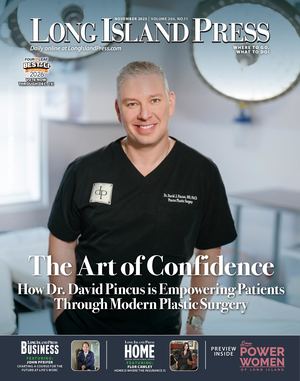Titanic — The Unsinkable Story
It seemed like an eternity, but just 37 breathless seconds passed when lookout Frederick Fleet espied a dark, glistening object rising menacingly over the placid sea and the collision that tore a 300-foot gash across the Leviathan’s iron and steel starboard side, popping and splitting plates from her forepeak to the boiler rooms.
A floating Babylon, the Titanic was the largest and most luxurious ship in the world. She had everything passengers on a trans-Atlantic cruise could want except, when they needed them, enough lifeboats. But was that necessary when her designers at Harland & Wolff called the ship virtually unsinkable when the designers needed room for a Parisian café?
The Titanic’s beloved captain, Edward Smith, was considered the best in the business, having been at sea for 42 years without a serious incident. Captaining the Titanic’s maiden voyage, he announced, would be his last. The words had more import than he could have ever possibly realized.
Smith knew ships, but not the mechanics of these new behemoths. Neither did Charles Murdoch, the officer in charge of the bridge that fatal night who ordered a hard starboard turn and then reversed the engine (which would have worked for a smaller ship) inadvertently driving the Titanic into the valley of death. Like all big ships, the Titanic turned more quickly the greater her forward motion.
Smith told the lookouts that if at all doubtful, to inform him at once. There were no doubts. Jarred by the impact, Smith was on the bridge in a jiffy. Shouts – cries — alarms: the Titanic making water fast. The captain sent for Thomas Andrews, managing director of Harland & Wolff. Andrews knew every inch of the ship and was keeping a notepad to record its slight flaws. The Titanic had 15 watertight compartments, but they had no ceilings. Like overflowing ice cube trays, water seeped from one compartment into another. No one knows whether Andrews recorded this flaw in his notepad. Regardless, the ship was doomed, “a mathematical certainty,” said Andrews.
Andrews gave the ship 2 and 1/2 hours to live, but because of the unsung efforts of the engineers, (all 35 perished) thousands of tons of water were pumped back into the Atlantic, buying some time. Distress signals, including the new SOS, sped out over the airwaves. The ears of young David Sarnoff, the future pioneer of radio and television, were the first to hear the faint signal of desperation from the dying Titanic.
The passengers realized the engines had stopped, but otherwise were blissfully ignorant of an unfolding epic tragedy. The 2,200-plus passengers were a microcosm of society from the very rich to steerage passengers from 38 countries. Even with the uncovering of the lifeboats and the order of women and children first, there was no panic but plenty of confusion. There had never been a lifeboat drill. Too many went to some stations and too few to others. As a result many of the 70-person capacity boats were lowered half empty, one with just 14 passengers.
Rockets fired from the Titanic were seen by the Californian, which noted the ship’s peculiar angle, but concluded its gradual disappearance was the result of it steaming away. The Californian’s wireless operator was never awakened. For the remainder of their lives, their captain and crew made plenty of excuses, none terribly convincing.
Casualness also marked the voyage of the Titanic. The ship’s binoculars had disappeared; more ominously repeated warnings about ice were mostly ignored, one just 40 minutes before the fatal collision. The winter of 1911-12 had been unseasonably warm, and unbeknownst to the Titanic, Greenland growlers had broken off into giant islands of ice floating directly into the Titanic’s path. The messages, pieced together, indicated an enormous belt of ice stretching 78 miles directly ahead. But like 9-11, no one connected the dots.
Some precautions were taken: At night, all lights were shut and the Titanic changed course moving further south. On the other hand, pressured by Bruce Ismay, owner of the White Star Liner, Smith did not reduce speed in order to arrive in New York in record time. What appears criminally negligent today was standard practice in 1912. Every passenger liner captain agreed, save one, they would have acted exactly like Smith. As long as the weather was clear and there were good lookouts, there should be ample time to avoid a berg. There had, after all, never been a case where a liner hit an iceberg, much less been sunk by one.
But in the early morning hours of April 15, all this was about to change in an appalling way. The human vignettes about the sinking Titanic will live as long as men traverse the seas: Arthur Reyerson giving his lifebelt to his French maid; Benjamin Guggenheim and his valet dressing in a top hat and evening clothes prepared to go down as gentlemen; the devotion of Ida Strauss refusing to leave her husband’s side and he refusing to go before the other men; the insufferable Lady Cosmo Duff watching the ship go under turned to her secretary and said ‘there goes your beautiful nightdress;’ John Jacob Astor, who was at the bar when the ship hit the berg quipped, “I asked for ice but this is ridiculous.” That story, undoubtedly a legend, sails on like the Titanic itself.
When tragedy and romance rendezvous with such drama and pathos, the story itself becomes unsinkable. As pandemonium swirled about them, the card game in the first-class smoking room played on with no more concern than if they were waiting to be called to dinner. Also playing valiantly on was the Titanic band. Walter Lord, the Titanic’s most famous chronicler, insisted their last song was “Autumn,” though most survivors remembered “Closer to Thee My God” — and so it has ever been in popular imagination, if not fact. Bruce Ismay, seeing nobody, quietly stepped in a half-full lifeboat. Staying aboard would have added only one more casualty. But too many perished in those icy waters — more than 1,500. Feeling the scorn, Ismay sequestered himself in a remote corner of Ireland dying a virtual recluse.
Death came to steerage passengers in shocking numbers: Some 530 out of 709; practically as many children in steerage were lost as men in first class. In a pitifully heartbreaking scene, Father Thomas Byles, who twice refused a lifeboat, was surrounded by more than 100 of these abandoned passengers clutching their rosary beads as he granted final absolution. Fate was capricious as it was cruel. J.P. Morgan, George Vanderbilt and the steel magnate Henry Clay Frick all cancelled at the last moment. But the Goodwin family found themselves transferred from the Oceanic to the Titanic’s steerage because of a coal strike. It seemed a stroke of good fortune. All eight Goodwins perished.
So did all the bellboys and senior officers, save Charles Lightoller, blown clear from the sinking Titanic by a burst of hot air. Twenty-eight years later, he distinguished himself in another evacuation — Dunkirk. Captain Edward Smith stoically remained on the bridge. British to the core, he refused a life jacket. The captain must go down with the ship.
At 2:20 a.m., according to one witness, the Titanic looked like a “lighted theatre” before the final, tragic denouement, when the 883 foot-, 47,000-ton vessel descended 13,000 feet deep into the Atlantic. She had been the queen of the ocean; now, like a passing mirage, she vanished. Only the echo of her existence remained; the terrible wails of those now plunging into the frigid water. “Like the roar of an athletic stadium,” one survivor recalled. Ten minutes later an eerie silence, except for the sound of water gently swooshing against the 18 bobbing lifeboats in the awful blackness of night.
At 4 a.m., the Carpathia, at great peril, rescued the 706 survivors. Its captain, Arthur Rostern, was a true hero but his story is often eclipsed by the callousness of the Californian. There were two inquests into the disaster, one in America and another in England. But the best answer to the tragedy came not from any official hearing, but an off-handed remark from Officer Lightoller, who muttered to no one in particular, “We were so sure.” That, perhaps, is what Thomas Andrews, chief draftsman and naval architect for the Titanic was thinking when at the end he was seen staring blankly at a painting above the fireplace, his lifejacket on a nearby table. Just the day before, with a streak of pride, he remarked that the Titanic was nearly as perfect as human brains could make her.
It wasn’t the iceberg that sank the mighty Titanic, it was human presumption. That’s what Anglican Bishop Edward Talbot preached in his sermon the Sunday after the Titanic went down. One century later, historian Allen C. Guelzo said that the Bishop was right, the real killer was presumption: Presumption that technology relieves us from prudence, presumption that intelligent regulation will eliminate fear and pain, presumption that we have achieved exemption from the dangers that plagued earlier generations, presumption that nature can be driven out with a well-intentioned pitchfork.
Neither then nor now has there ever been a more fitting epitaph for that fabled and fatal maiden voyage.

































